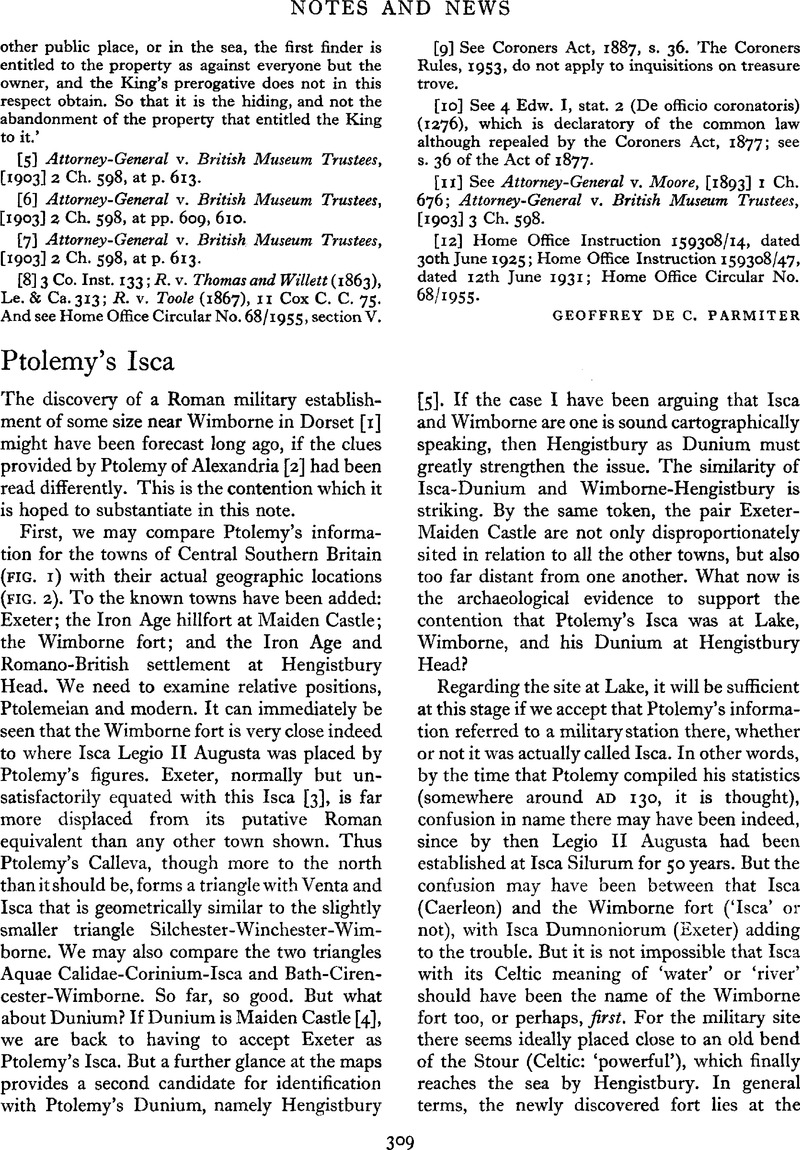No CrossRef data available.
Article contents
Abstract

- Type
- Notes and News
- Information
- Copyright
- Copyright © Antiquity Publications Ltd 1968
References
Notes
[1] Proceedings Dorset Nat. Hist, and Arch. Soc. 87, 1965, 99–101 Google Scholar; 88, 1966, 115 and 89, 1967, 143; and Frere, S., Britannia (1967), 72–4Google Scholar.
[2] A map based on Ptolemy’s data is provided in the O.S. Map of Roman Britain (3rd ed., 1956) and fig. i is obtained from it.
[3] Webster, G. and Dudley, D. R., The Roman Conquest of Britain (1965), 108Google Scholar.
[4] Wheeler, R. E. M., Maiden Castle, Dorset (1943), 11–14Google Scholar.
[5] I am indebted to John Soffe of Broadstone, Dorset, for drawing my attention to this possibility, crucial to the whole argument.
[6] Webster, G., Proceedings [1], 82, 1960, 88–108 Google Scholar; 86, 1964, 135–49.
[7] Brailsford, J. W., Hod Hill (Vol. I) (1962)Google Scholar and Richmond, Sir I., Hod Hill (Vol. II) (1968)Google Scholar.
[8] O.S. Map of Roman Britain, general map and fig. 5.
[9] Proceedings, op. cit. [1].
[10] Calkin, J. B., ‘An Early Romano-British Kiln at Corfe Mullen’, Antiq. Journal, xv, 1935, 42–55 CrossRefGoogle Scholar.
[11] Frere, Britannia, 70–1.
[12] Wheeler, Maiden Castle, op. cit. [4].
[13] O.S. Map of Southern Britain in the Iron Age (1962), map 6 in particular.
[14] Bushe-Fox, J. P., Excavations at Hengistbury Head 1911–12 (1915), App. 1 Google Scholar.
[15] Brailsford, J- W., ‘The Durotrigen Culture’, Proceedings [1], 79, 1957, 118–12 Google Scholar1; Calkin, J. B., ‘Some Early Iron Age Sites in the Bournemouth Area’, Proceedings [1], 86, 1964, Table II, 129 Google Scholar.


